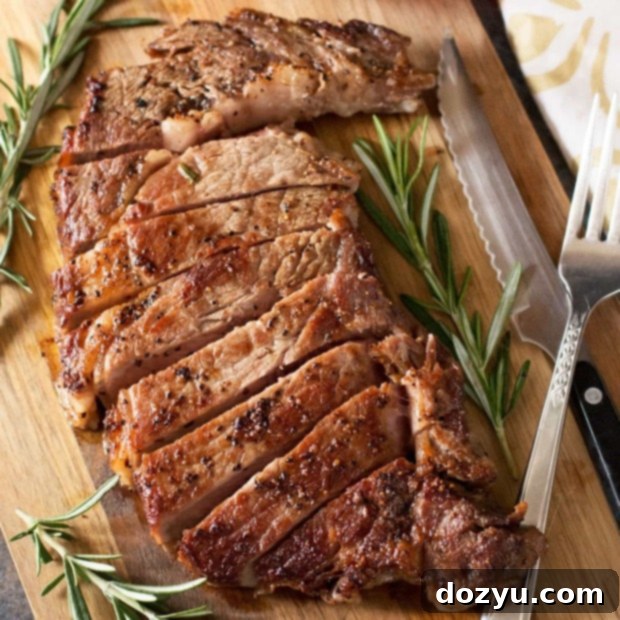Mastering the Perfect Ribeye Steak: Your Ultimate Guide to Buttery, Tender Perfection
Imagine a steak so exquisitely tender, so rich with buttery flavor, and so perfectly juicy that every bite transports you to a gourmet steakhouse. This isn’t just a dream; it’s the reality of the perfect ribeye steak, and it’s the only way you’ll ever want to cook one again. Prepare to fall in love with steak, and perhaps, inspire a little love from those you share it with!
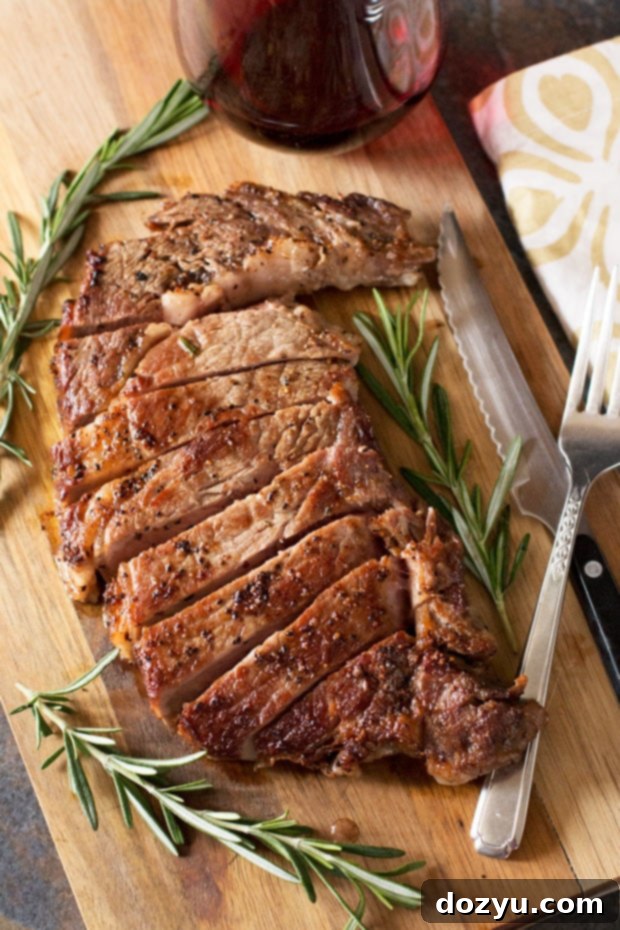
Yes, you absolutely read that right! Today, we’re diving deep into the art of creating the most magnificent steak you’ve ever tasted, right in your own kitchen. And no, this isn’t an April Fool’s Day prank – delivering on the promise of an incredible meal is something I take very seriously!
Frankly, misleading you about something as crucial as a perfect steak would surely invite a deluge of virtual hate mail, and who needs that? Instead, I’m here to share a culinary revelation that will change your steak game forever.
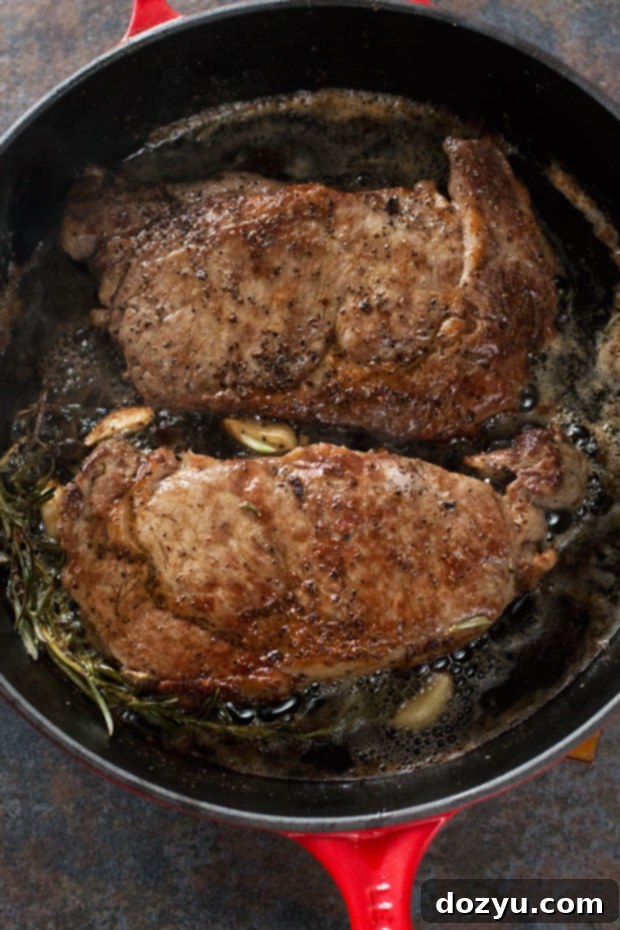
For a long time, I struggled to achieve that coveted melt-in-your-mouth texture and rich flavor from homemade steaks. Despite my best efforts, they never quite measured up to the exquisite cuts I savored in high-end restaurants. My previous job often had me dining at steakhouses, and I became accustomed to a level of steak perfection I desperately wanted to replicate at home. The thought of consistently creating such deliciousness was a driving force.
My Journey to Steak Perfection: From Frustration to Flavor
The quest for the “perfect steak” became a personal culinary challenge. As I approached a significant birthday milestone, I decided it was high time to truly master this foundational dish. I embarked on an extensive research mission, devouring countless articles, scrutinizing cooking blogs, and watching what felt like every YouTube tutorial on steak preparation. I absorbed advice from top chefs, home cooks, and food scientists alike, piecing together the ultimate combination of techniques and tips.
The result of this dedication? A steak so intensely flavorful and unbelievably tender that it will make you lean back in your chair, savoring every single bite. This method consistently delivers a steak that’s crusty on the outside, juicy on the inside, and infused with incredible depth. Imagine pairing one of these beauties with some crisp, roasted asparagus and a robust red wine – it’s an experience nothing short of culinary heaven.
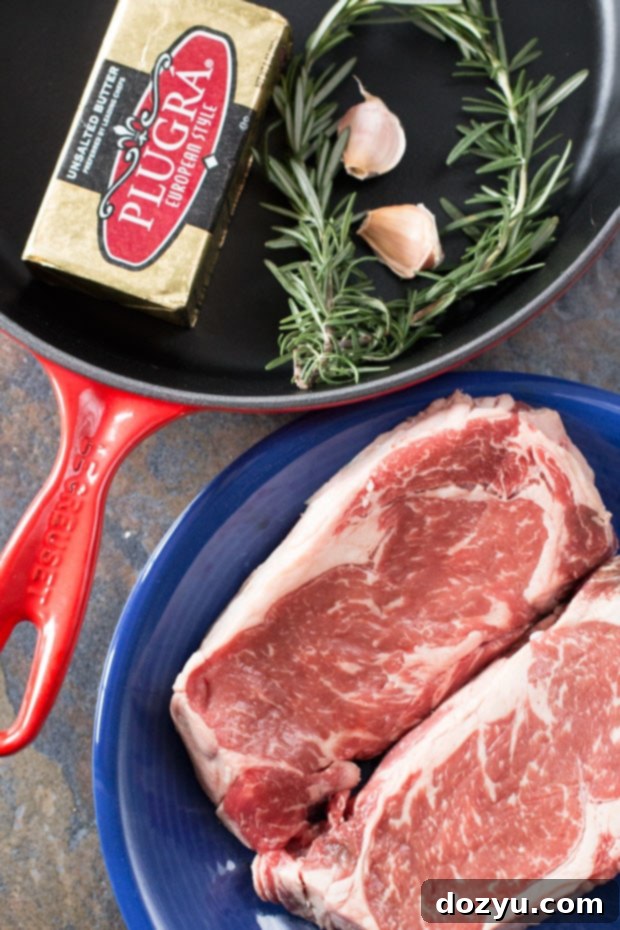
The Unbeatable Secret: A High-Quality Cast Iron Skillet
Let’s cut to the chase: there’s one undeniable secret to achieving the perfect steak, and it all starts with your cookware. That secret is a cast iron skillet. But not just any cast iron skillet. For truly mind-blowing results, I’m talking about a Le Creuset cast iron skillet.
Why Cast Iron Reigns Supreme for Searing Steak
The magic of cast iron lies in its superior heat retention and distribution. Unlike lighter pans, cast iron holds a high, consistent temperature, which is absolutely essential for creating that perfect, crusty sear on your steak – known as the Maillard reaction. This process caramelizes the natural sugars and amino acids on the surface of the meat, developing incredibly complex flavors and a beautiful browned exterior that simply can’t be achieved with less substantial cookware.
My Le Creuset skillet gets screaming hot over medium heat in about five minutes flat. What truly impressed me was its ability to maintain that intense heat throughout the entire cooking process, even when adding the steaks. This consistent high heat is what allows for a quick, powerful sear that locks in juices without overcooking the interior.
The Le Creuset Difference: No-Fuss Cast Iron
I grew up watching my grandma manage her collection of nearly a dozen traditional cast iron skillets. While they produced amazing food, the constant need for cleaning and seasoning was always a tedious chore, often involving shortening splatters everywhere. It was messy and time-consuming. However, modern advancements have made cast iron more user-friendly.
This particular Le Creuset cast iron skillet is a game-changer because it requires zero pre-seasoning. The enameled coating means you simply cook and clean. It essentially seasons itself as you use it, making maintenance incredibly easy. My mind was completely blown by this revelation! This ease of use makes a significant difference for anyone who loves the results of cast iron but dreads the upkeep.
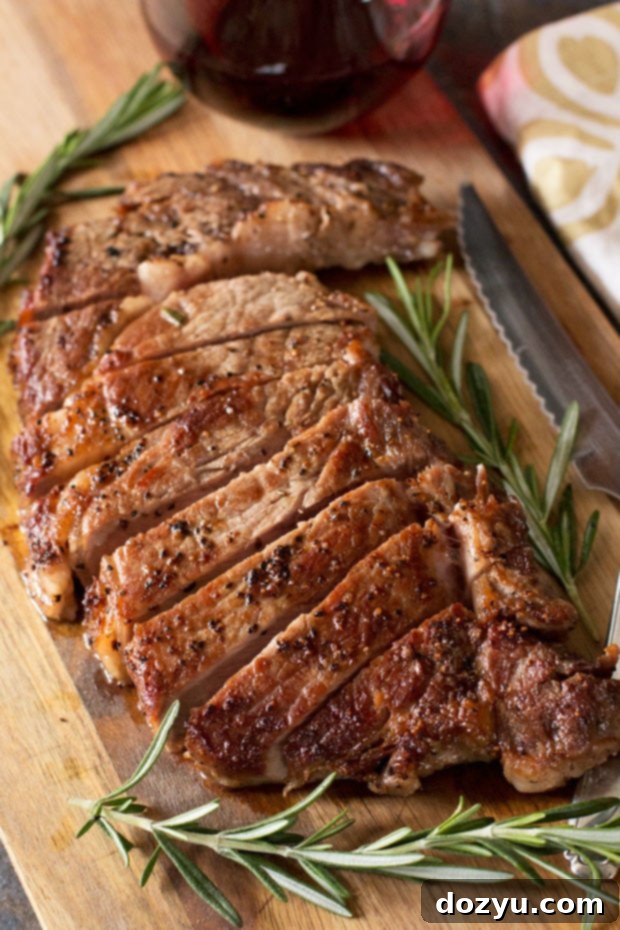
Choosing and Preparing Your Ribeye for Excellence
The foundation of a perfect steak begins long before it hits the pan. Selecting the right cut and preparing it properly are critical steps:
- Quality Ribeye: Opt for good quality ribeye steaks, ideally 1 to 1.5 inches thick. Ribeye is prized for its marbling (streaks of fat within the lean meat), which melts during cooking, basting the meat from the inside out and contributing to its incredible tenderness and flavor.
- Room Temperature Rest: This is non-negotiable! Remove your steaks from the refrigerator at least 20-30 minutes before cooking, allowing them to come closer to room temperature. This ensures more even cooking throughout the steak, preventing the outside from overcooking while the inside struggles to reach temperature.
- Simple Seasoning: With a high-quality ribeye, less is more. Generously season both sides of your steaks with sea salt and freshly cracked black pepper just before cooking. Don’t be shy with the salt; it helps create that fantastic crust.
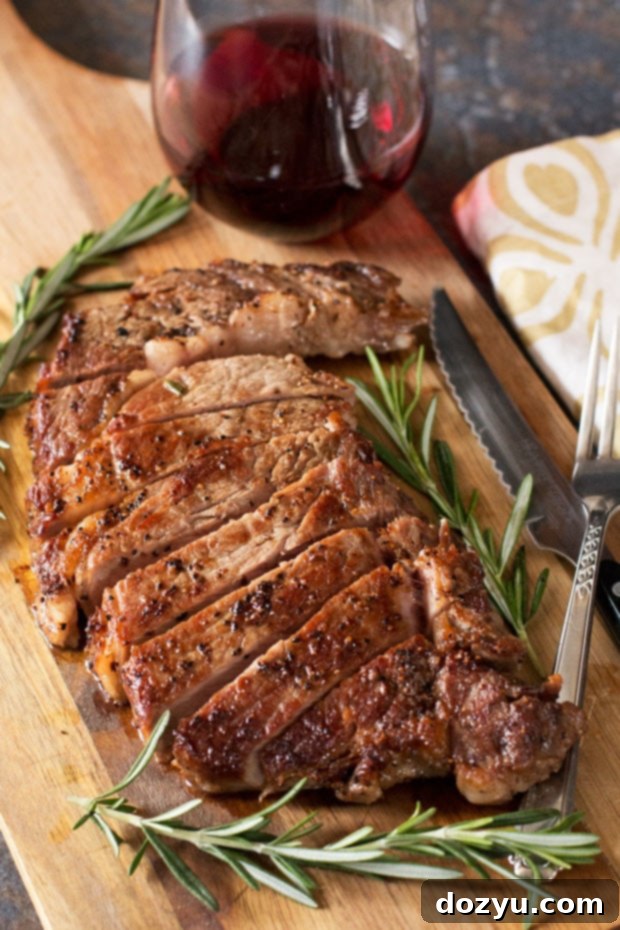
The Art of Searing: Step-by-Step for Maximum Flavor
Now, let’s get into the actual cooking process that makes all the difference:
- Preheat Your Pan: Heat your cast iron skillet over medium heat for a full 5 minutes. You want it screaming hot! Open a window or turn on your kitchen fan at this point – there will be smoke.
- Add Oil, Then Steak: Once the pan is shimmering hot, add a teaspoon of olive oil and swirl to coat. Carefully lay the steak into the pan, always placing it away from you to avoid splattering.
- Initial Sear & Fat Rendering: Sear the steaks for 30 seconds, then flip and sear for another 30 seconds. Next, use tongs to turn the steaks on their sides, allowing the fat cap (the strip of fat along the edge) to render down for about 30 seconds. This step is crucial for extra flavor and a beautifully cooked edge. Return the steaks to their original flat position.
- Baste with Aromatics: Add the butter, fresh rosemary sprigs, and halved garlic cloves to the pan. As the butter melts, tilt the pan slightly and use a spoon to continuously baste the steaks with the melted butter and infused aromatics. This butter bath will impart incredible flavor and help create an even crust.
- Flip and Cook to Perfection: Continue cooking the steaks, flipping them every minute. This frequent flipping helps achieve an even crust and prevents one side from overcooking. Keep basting with the flavored butter until the steaks reach your desired internal temperature.
Achieving Perfect Doneness: More Than Just a Guess
While the “thumb test” can be a helpful guide, a reliable meat thermometer is your best friend for guaranteed perfection:
- Rare: 120-125°F (49-52°C) – very red, cool center.
- Medium-Rare: 130-135°F (54-57°C) – red, warm center. This is often considered the ideal doneness for ribeye.
- Medium: 135-140°F (57-60°C) – pink, warm center.
- Medium-Well: 140-150°F (60-66°C) – slightly pink center.
- Well-Done: 155°F (68°C) and above – little to no pink, firm.
Remember that the steak will continue to cook slightly after removal from the pan due to “carryover cooking,” so it’s often best to pull it off a few degrees before your target temperature.
The Golden Rule: Let It Rest!
Once your steaks reach your desired doneness, brush their tops with one of the garlic cloves from the pan, then immediately transfer them to a clean cutting board. The most critical step now is to let them rest. Rest your steaks for at least 10 to 15 minutes before slicing. This allows the muscle fibers to relax and reabsorb the juices that have migrated to the center during cooking. Skipping this step means all those precious juices will run out onto your cutting board, leaving you with a dry steak.
Serving Your Masterpiece
After resting, slice your perfect ribeye against the grain for maximum tenderness. To truly elevate this dish, consider topping it with a generous knob of homemade garlic herb butter – it adds an extra layer of richness and aromatic flavor that is simply irresistible. Serve alongside your favorite sides, like roasted asparagus, creamy mashed potatoes, or a fresh green salad, for a complete and unforgettable meal.
With this pan and these techniques, you are armed with the magic to create a meal that will impress anyone. I’m still on the lookout for the perfect person to share this culinary enchantment with, but when I find them, I guarantee this steak will seal the deal!
Disclosure: I received free product from Le Creuset as part of this giveaway and post. As always, all opinions and recipes are my own. Thanks for supporting the brands that support Cake ‘n Knife!
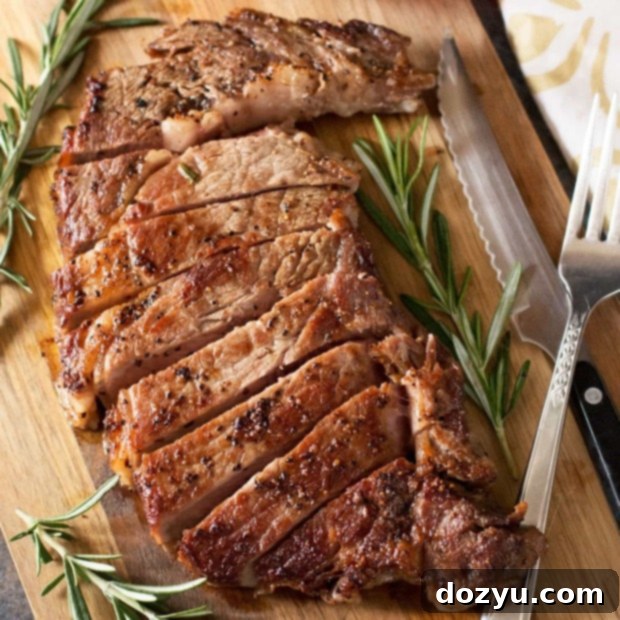
Table of Contents
Toggle
The Perfect Ribeye Steak
5 minutes
5 minutes
10 minutes
Ingredients
- 2 good quality ribeye steaks rested at room temp for 20 minutes
- 1 tsp olive oil
- 2 tsp sea salt
- 4 tsp freshly cracked black pepper
- 5 Tbsp good quality butter
- 3 sprigs fresh rosemary
- 2 cloves garlic cut in half
Instructions
-
Heat your cast iron pan over medium heat for 5 minutes until screaming hot (be sure to turn the fan on at this point, it’ll help!).
-
While the cast iron is heating up, generously season steaks on both sides evenly with sea salt and freshly cracked black pepper. Once the pan is hot, add the olive oil and swirl to coat the pan. Lay the steak in the pan (always away from you to prevent splatters!).
-
Cook the steaks for 30 seconds, then flip and cook an additional 30 seconds. At this point, turn the steaks on their sides with the fat cap down in the pan. Render the fat for 30 seconds, then return to their original flat position in the pan.
-
Add the butter, rosemary sprigs, and garlic halves to the pan. As the butter melts, baste the steaks generously using a spoon. As you continue to cook the steaks, you’ll want to flip them every minute until they reach your desired internal temperature, ensuring they color evenly on both sides and absorb the aromatic flavors.
-
When your steaks are at your desired temperature, brush the tops with one of the garlic cloves from the pan and immediately remove them to a cutting board to rest. Rest the steaks for at least 10 to 15 minutes before slicing and serving. This is crucial for juicy results.
Notes
Main Dish
